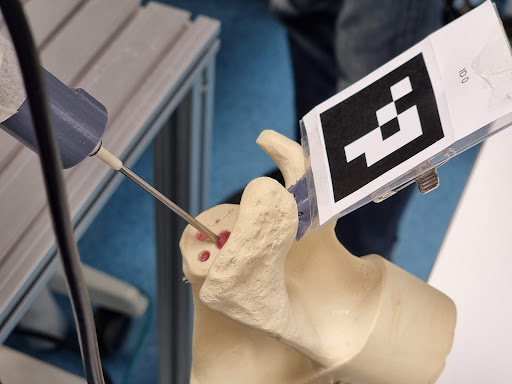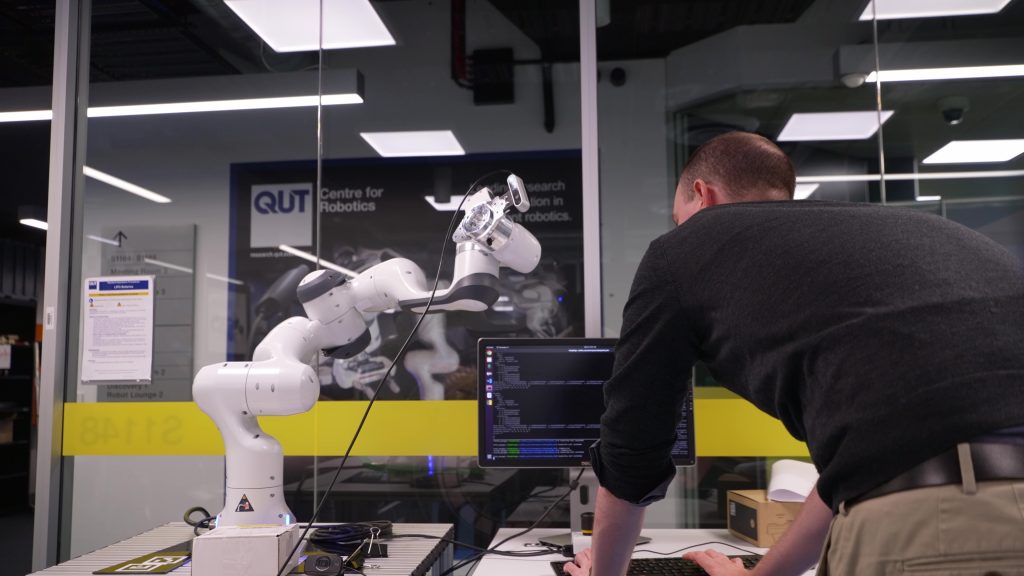Engineers are devising groundbreaking surgical robots that could make some medical procedures safer and more precise.
When most people think of professionals who enable life-saving surgery, it’s typically the surgeons who come to mind — and with good reason. They perform highly complex procedures that improve or even save the lives of thousands of people each year.
But take a closer look and much of the life-saving work that surgeons do is enabled by some incredible engineering feats.
Surgical robots designed by engineers can improve patient outcomes and reduce the need for repeat surgery.
Surgical robots in action
In every surgery, no matter how skilled or capable a surgeon is, there’s always some risk of human variability. As internal surgery requires the manipulation of tools through incisions as small as 10 mm, this can sometimes pose a challenge for surgeons.
The surgical robot has transformed the operating theater internationally and across Australia, allowing surgeons to work with greater precision using less invasive incisions.
Sydney’s Royal Prince Alfred Hospital (RPA) is the only training institute for robotic surgery in the southern hemisphere. It is also one of the few in Australia that has a robot on its surgical “team”.
While Intuitive’s da Vinci surgical robot is one of the systems implemented in Australian hospitals – including at RPA – there are several others. Wangaratta Private Hospital has invested in the region’s first Mako Stryker robot. The Versius Surgical Robotic System installed at Sydney’s Macquarie University Hospital is used in gynaecological, urologic and general surgery laparoscopic procedures.
The technology advances can be gauged by the number of patents filed by just one company. Intuitive alone has over 6,300 active and pending patents. And engineers are driving a lot of this innovation.
Biomedical engineer Alain Vanquaethem, with French company SpineGuard, has patented dynamic surgical guidance sensing technology to secure and streamline the robotic placement of bone implants.
Dr Yuhang Chen who got his PhD in Mechanical Engineering from Sydney University is playing a key role in refining and advancing robotic surgery at the UK’s National Robotarium. He has developed a new technique that will offer surgeons a real-time, reliable and evidence-based method for determining the optimal surgical margin to make when removing a tumour.
“We’re bringing together expertise from laser manufacturing, fibre-optic sensors, micromechanical probing and computational modelling to create a mechanical ‘imaging’ probe capable of detecting cancerous tissue that can be used with a standard minimally-invasive surgery instrument,” says Chen.
Increasing precision
Surgical robotics is an evolving field, and many engineers in Australia are continuing to push the capabilities of this technology.
Professor Michael Milford, Joint Director at the Queensland University of Technology’s (QUT) Centre for Robotics, hopes his team’s work in developing assistive surgical robots will be able to mitigate the risk of human variability in shoulder joint replacement surgery.
“Our aim is to produce robotic technology that is somewhat automated but also interacts with the surgeons in order to enable them to do a more repeatable, perhaps higher proof, job in surgical shoulder joint replacements,” says Milford, who works alongside team members Professor Peter Pivonka, Deputy Director of the ARC ITTC Joint Biomechanics, PhD student Morgan Windsor and Dr Jing Peng, a Research fellow in Robotic Surgery at QUT.
Funded by the Australian Research Council Industrial Transformation Training Centre for Joint Biomechanics (ARC ITTC Joint Biomechanics), the team’s focus is on supporting surgeons with the accurate placement of implants into the shoulder joint based on pre-surgical planning and joint modelling.

“Getting the angles of placement correct and doing it repeatedly is a key part of ensuring good surgical outcomes for the patients,” says Milford.
“If surgeons have a robot assisting them then there is also the potential for them to be relieved of some of the cognitive load of performing a task. It would still be a collaborative process but it wouldn’t just be on the surgeon.”
Milford allocates a significant portion of the team’s time on developing the robot’s navigation system so it can work effectively alongside surgeons.
“It’s not that dissimilar to the navigation systems we’ve previously worked on for autonomous vehicles. The performance of the system is important but what’s actually more important is whether the system can, for example, detect when it’s in trouble,” says Milford.
“In a collaborative environment where it’s working alongside a surgeon, the ability for the system to understand how it’s going and request help is critical.”
The assistive technology could also be used for educational purposes by helping younger surgeons place implants and carry out surgical procedures with greater precision.
“It could perhaps even fast track the process of training up new surgeons to do the procedure as optimally as possible,” says Milford, but it’s far from the most rewarding part of conducting this research.
“If we can help in this space it has the potential to eventually translate into better surgical outcomes for a large number of people. That will result in better quality of life that will lead to less burden on the health system and on the rehabilitation system,” says Milford.
Impacts far and wide
With the potential for surgical robots to enhance patient outcomes and improve surgical precision, many doctors are welcoming the research and work done by engineers.

Adjunct Professor Ashish Gupta, a sub specialist shoulder surgeon at Greenslopes Private Hospital in Brisbane, who is very active in the medical robotics space, has worked closely with Milford and his team on the surgical robotics project.
He says a major benefit is the reduced cost of these robots, which has significant flow-on effects.
“[This robot] will be one tenth of the size of what’s commercially available right now. Smaller means it’s more mobile, it takes up less space so it can be easily transported and more people can get access to it. The current robots are huge and you can’t really cart them from one hospital to another.”
These benefits mean the surgical robots may be able to have an impact in diverse and remote places.
“We hope to get this technology to a multitude of surgeons globally, rather than to a select few surgeons in the western world in which the hospitals can afford these machines,” says Gupta.
He’s not one to hold back in expressing his gratitude for engineers who are helping to make these feats possible.
“Throughout the whole journey of developing an invention, which is from science research to commercialisation, orthopedics is inherently tied to engineering. Nothing we do in orthopedics is possible without engineering,” he says.
“These engineers are making a very tangible difference to someone’s life. The ability to be at the coalface of great technology that can have an influence on someone else’s life is the most rewarding thing. I think the future is very bright in this area.”
The prospect of making a meaningful contribution in healthcare — especially in an aging population where an increasing number of people are likely to require joint replacement surgery — motivates Milford every day.
“This is a rapidly growing field of demand. The repercussions are huge and can be really transformative. There’s a massive quality of life impact that you can have across a significant fraction of the population. The benefits are hard to beat.”



